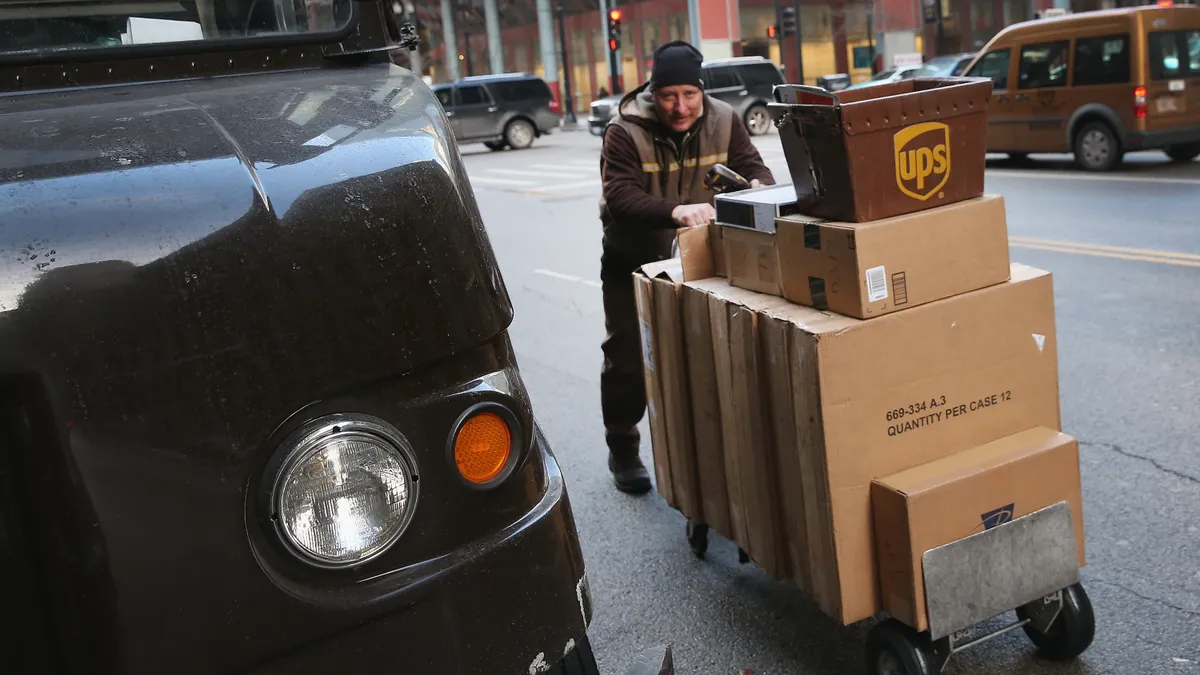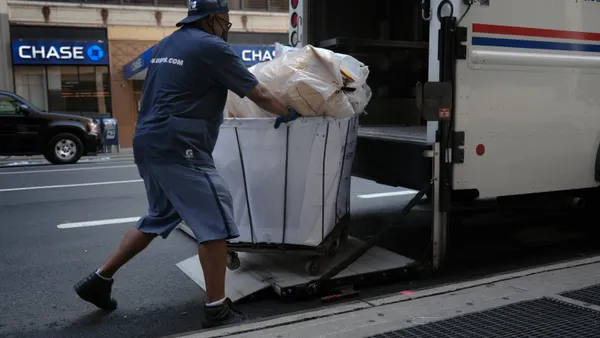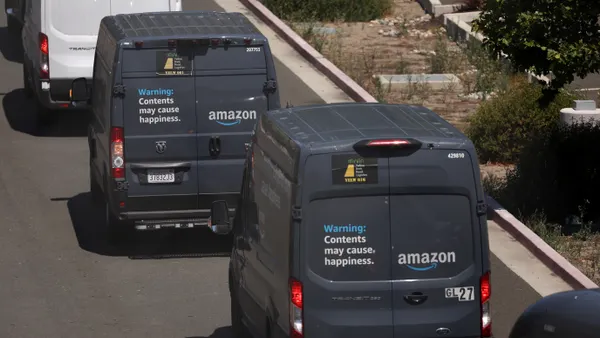Planning for peak season has become a year-round job for parcel carriers, with shippers attempting to meet heightened consumer demand that has only climbed during the pandemic.
But 2021 brings with it a host of new supply chain challenges for carriers and shippers alike. Difficulties obtaining parts, snags in the production process and lengthy transportation delays could create a choppy and unpredictable flow of volume from shippers to last-mile carriers during peak. Retailers are looking to ship whatever inventory they have as soon as they can amid the uncertainty.
"First in, first out — I'm not going to wait until Cyber Monday and have 1,000 orders and only 500 pieces of inventory to ship out," said Vince DeAngelis, vice president of carrier partnerships for Shippo, an e-commerce technology company whose carrier partners include UPS, FedEx and DHL. "I'm going to ship out what I have now."
But what if those 500 remaining pieces aren't ready in time for peak-season shipping? Bill Seward, UPS president of worldwide sales and solutions, wonders that himself, even as UPS and other carriers hired tens of thousands of seasonal employees and invested heavily in their networks to handle heightened volumes.
"If I were thinking about a risk it would be this idea that maybe inventories don't show up," Seward said in an interview. "We've got a lot of work put in and a lot of assets to deploy to run a good peak season. We run a flexible network, we'll adapt, but that would be probably the biggest concern."
Sticking to peak playbook: Order visibility, weekend shipping and more
Supply chain constraints are already stymieing the flow of some packages into UPS' network. Congestion at ports in Los Angeles and Long Beach is the culprit. One of the company's nearby hubs is set up to handle 70 containers, but it's "only getting about 50" due to challenges the ports are facing, UPS CEO Carol Tomé said on the company's Q3 earnings call.
Once a shipper's goods enter the UPS network for peak season, company executives express confidence that they will reach their destinations on time. UPS will run much of the same playbook it did last year to protect its network and keep service levels high, especially for its small- and medium-sized business and healthcare consumer segments, Seward said.
The carrier made headlines in 2020 for placing shipping limits on companies like Nike and Gap for Cyber Monday. Seward stressed that the limits were instituted for unplanned volumes, or those not agreed upon to be shipped ahead of time, from some of its largest customers.
"The bottom line is, nobody wins if we take on volume above the agreed upon levels and the network doesn't run right, even for the customers that want to give us the volume," Seward said.
When volumes do surge above available space — UPS expects demand to outpace industry-wide capacity by 5 million packages per day — the carrier has plans to minimize disruption.
UPS is collaborating more closely with its largest shippers to understand their merchandising decisions better, Seward said. In some cases, UPS has direct connectivity with a customer's order system "to see how the orders are dropping so we can allocate equipment accordingly" in the network.
Timing is an important part of UPS' peak season strategy, he added. If a customer volume surge is coming, UPS makes sure the packages enter its network when it can handle it best.
"There's peak season, and then there are the peak-iest of peak days and the peak-iest of peak weeks," Seward said. "So not just pulling forward to before the holidays but, in some cases, deferring out of Cyber Week and into what we call 'bridge weeks' between the week before the Christmas holiday and Cyber Week."
Which day of the week a shipment arrives also matters. The company's recent investments in weekend operations is opening up additional network capacity for its customers to use. Last Saturday, UPS delivered 6 million packages, which "would have been basically nothing" a year ago, according to Tomé.
Consumer concerns lead to earlier orders
These peak season adaptations are directed toward UPS' largest customers, the ones who can generate enough unplanned volume to unsteady its network. According to Seward, they're buying in on the adjustments.
There's more emphasis from these shippers on "pulling volume forward" to earlier in November, Seward said. The CEO of one large shipper UPS serves "was ecstatic about the fact that he made some decisions to buy early, and really bring his inventory to the U.S. a lot earlier," he added.
This has been driven in part by consumer behavior. According to a survey by the International Council of Shopping Centers, 75% of consumers plan to shop earlier this holiday season. Among those shopping earlier, 45% want to ensure their desired items are available.
"The bottom line is, nobody wins if we take on volume above the agreed upon levels and the network doesn't run right, even for the customers that want to give us the volume."

Bill Seward
UPS President of Worldwide Sales and Solutions
Consumers' supply chain concerns have led many to purchase gifts sooner rather than later, and retailers are activating holiday promotions earlier in response, Tomé said.
"We saw that last week, as an example, our volume was quite good because of promotions that our retail customers were offering," she said. "So I think everyone's trying to work through the supply chain demand to ensure a good holiday season."
Editor's note: This story was first published in our Logistics Weekly newsletter. Sign up here.















